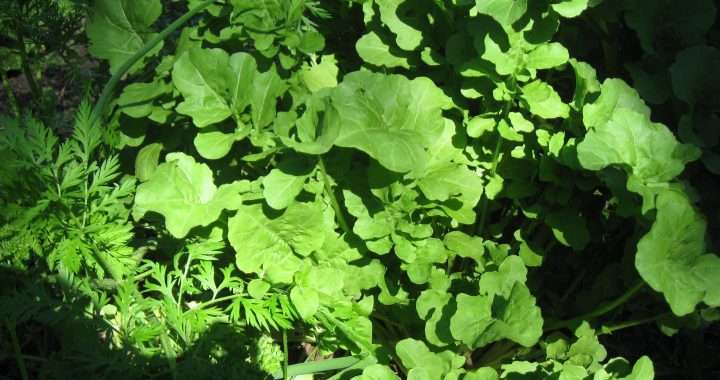
Regenerative urban agriculture – translating principles into action
Author : My Food Garden
Regenerative urban agriculture works with regenerative agriculture principles within an urban and peri-urban context. Those principles are more commonly discussed around how to regenerate farming land and communities severely degraded by chemical farming and animal stocking rates totally unsuited to the land qualities.
Regenerative agriculture principles are deceptively simple, using natures processes, guided by our feeling, thinking and willing, as gardeners and farmers. I had the joy of listening to a talk recently in Brisbane by Charles Massey, author of “Call of the reed warbler”. Its a wonderful book about regenerative agriculture and he is an inspiring speaker.
The book and talk of Charles Massey reinforced in my mind the power of regenerative agriculture to greatly reduce unnatural inputs, increase yields and profit, whilst truly contributing to healthier soil, waterways and air. A more sustainable and resilient world without the use of toxic chemicals in food production.
Regenerative agriculture – 5 key principles
- Sun – Use the natural capacity of plants, via photosynthesis, to transform energy of the sun into organic matter. In the process, plants draw minerals from the atmosphere into the soil and by keeping the soil covered with plants, these minerals can be transformed by soil life into a more appropriate balance for healthy plant life.
- Water – Leading on from the sun principle, continuous plant cover on the soil improves its water holding capacity and stops soil erosion. Food growing spaces, whether for improved pasture or cropping should be designed to slow down water flow across the landscape.
- Soil – Strong concentration on balancing soil to create the ideal habitat for soil organisms to transform substance into healthy soil. Well managed sun and water principles are a great aid for soil life processes. As a result, soil softens, soil fertility and water holding capacity are greatly improved
- Biodiversity – Focus on a diversity of plant, insect and animal life in the food growing spaces. Create habitats for native insects and animals within growing spaces and work with a diversity of plants in pastures and cropping areas. Sun, water and soil principles all work in sync to support an appropriate balance of environments for biodiversity to thrive.
- Human/social – The farmer or gardener can guide these 4 principles so they achieve the desired regenerative outcome. Ignoring even one principle can throw the others completely out of balance. The human principle should also focus on how the garden or farm can regenerate and sustain local communities. The economic factor comes into play here as well.
Regenerative urban agriculture – alignment and tips
Here are tips on integrating the five key principles into urban agriculture on any scale?
- Sun – Design food growing spaces to get maximum sun and ensure that soil is mostly covered with living plants, for example, use living mulches around fruit trees and inter-plant at high density as much as possible in vegetable and herb growing spaces. Be very conscious of working with the seasons. I use biodynamic methods for planting times and aiding foliar functions of plants
- Water – Design food growing spaces to slow down water flow, but not to flood. Water at base of plants to reduce wastage and improve efficiency. Cover soil at all times
- Soil – Use green manure crops to feed soil in a strategic way. Build compost heaps and feed to the soil, Make and use biological additives that aid soil life and draw in organic inputs from your local area. Periodically re-mineralise soil. Biodynamic methods are a great help in supporting soil life processes.
- Biodiversity – Use companion planting, plant out flower varieties around food growing spaces to create beauty, insect habitats and food. Encourage native life into and around your food growing spaces. You will be greatly surprised at the benefits of them being part of your team in caring for your space
- Human – Have an attitude of love to the food growing spaces and share your space with other people. Develop your consciousness in a very active way around your food growing activities and use it for your well being. For commercial scale, step away from conventional channels and sell to your local market, you will surprised at how viable this can be on a relatively small scale.
In reflecting on my own food gardens and work in urban agriculture over many years, its heartening to know that I have intuitively worked with the five principles of regenerative agriculture and can see a strong alignment to biodynamics. This past blog of mine on individuality in biodynamic practice is helpful with that alignment.
In Massey’s book, he mentions quite a number of biodynamically managed farms as examples of regenerative agriculture. This does not surprise me and also helps me to appreciate the great wisdom of Steiner in starting biodynamics long before permaculture and the regenerative agriculture frameworks were developed.
I can see how the strivings of organic farmers and gardeners, in urban and peri-urban environments, who are informed by organic food growing methods, biodynamics, biological farming, permaculture, no till farming and natural farming are all dealing with regenerative urban agriculture. One of the projects we are working on is at the Samford Parklands. Its focus is on creating a regenerative urban agriculture centre. If the vision is achieved, it will become a globally significant hub for urban agriculture.
Authored by Peter Kearney – www.beta.myfoodgarden.com.au
PS: Come along to one of our Workshops or talk to us about our Coaching service.

